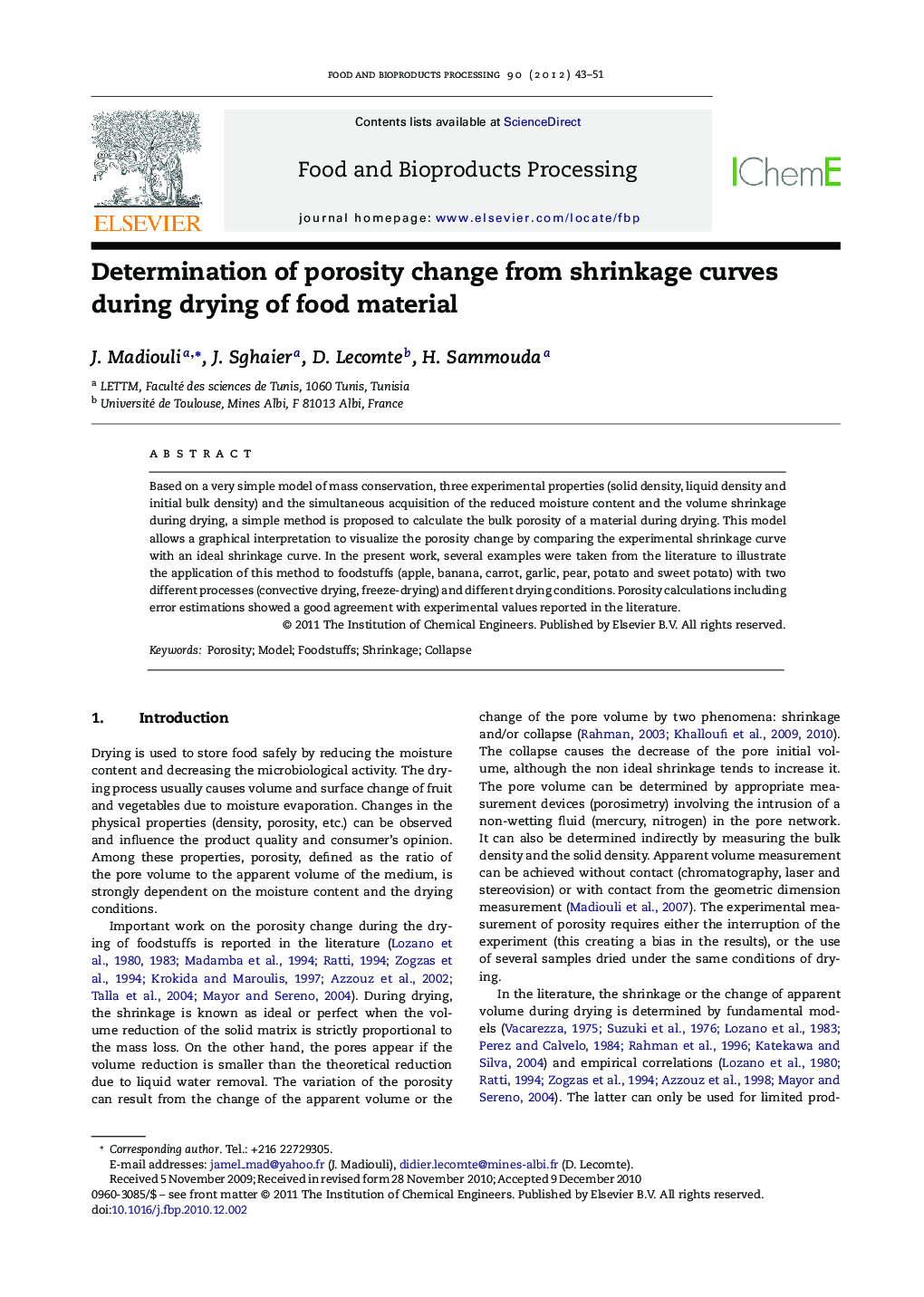| Article ID | Journal | Published Year | Pages | File Type |
|---|---|---|---|---|
| 19166 | Food and Bioproducts Processing | 2012 | 9 Pages |
Based on a very simple model of mass conservation, three experimental properties (solid density, liquid density and initial bulk density) and the simultaneous acquisition of the reduced moisture content and the volume shrinkage during drying, a simple method is proposed to calculate the bulk porosity of a material during drying. This model allows a graphical interpretation to visualize the porosity change by comparing the experimental shrinkage curve with an ideal shrinkage curve. In the present work, several examples were taken from the literature to illustrate the application of this method to foodstuffs (apple, banana, carrot, garlic, pear, potato and sweet potato) with two different processes (convective drying, freeze-drying) and different drying conditions. Porosity calculations including error estimations showed a good agreement with experimental values reported in the literature.
Research highlights► We use mass conservation to model bulk porosity changes of a food material during drying. ► Three experimental properties (solid, liquid and initial bulk density) and one experimental curve (volume shrinkage vs. moisture content) are needed. ► A good agreement between the model and experimental porosities from the literature is obtained for various foodstuffs (apple, banana, carot, garlic, pear, potato, sweat potato).
